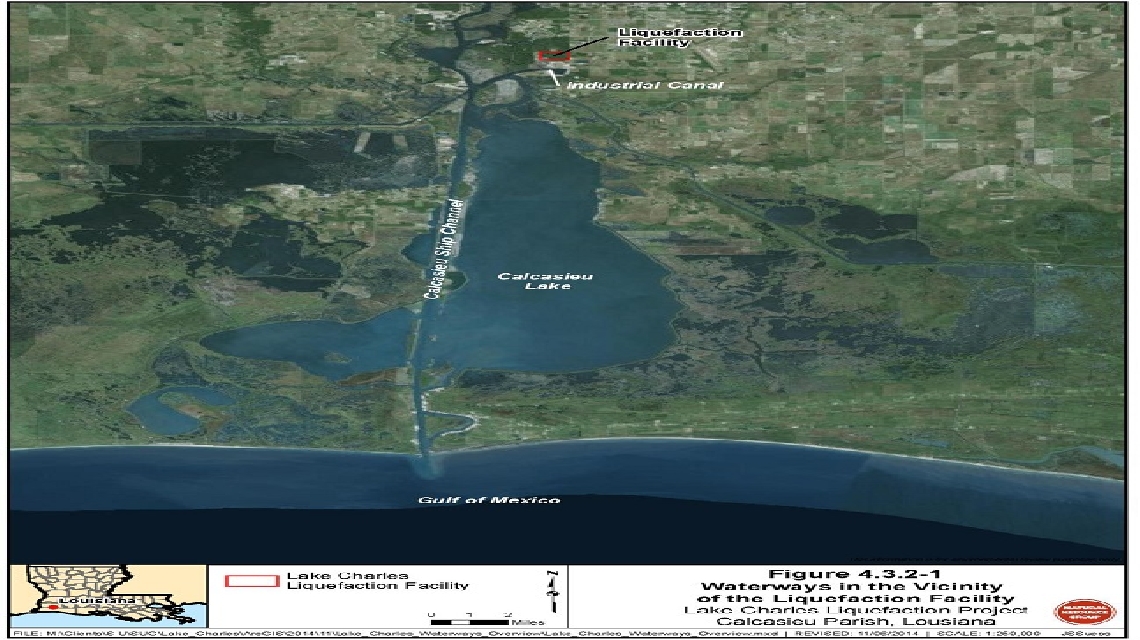In a Draft Environmental Impact Statement for the Lake Charles Liquefaction Project issued 10 April 2015, the Federal Energy Regulatory Commission (FERC) has offered early environmental approval. According to the draft statement, “construction and operation of the project would result in adverse environmental impacts, but most impacts would be reduced to less-than-significant levels.”
Key factors sited were:?
• Construction and operation of the proposed liquefaction facility would not result in increased LNG vessel traffic (i.e., LNG vessel traffic would not exceed 225 vessels per year considered by the U.S. Coast Guard in its waterway suitability reviews).
• About 6.5 miles (36 percent) of the proposed new pipelines would be looped and would overlap with the adjacent existing pipeline right-of-way, which would minimize new disturbance.
• Much of the work at aboveground facilities would be located at existing facilities (four existing compressor stations and five existing metering and regulating stations), which would minimize new disturbance.
• The horizontal direction drill method would be used to cross 22 waterbodies, including the Calcasieu River, which would avoid direct impacts on these resources.
• Lake Charles LNG would mitigate wetland impacts associated with the construction and operation of the proposed liquefaction facility in accordance with the project-specific Compensatory Mitigation Plan.
• The FERC would complete the process of complying with section 7 of the Endangered Species Act prior to construction.
• The FERC staff has completed consultation under section 106 of the National Historic Preservation Act and implementing regulations at 36 CFR 800 and determined that no historic properties would be affected by the project.
• Lake Charles LNG and Trunkline would comply with all applicable air and noise regulatory requirements during construction and operation of the project.
• Lake Charles LNG and Trunkline would minimize impacts on environmental resources during construction and operation of the project by implementing, as applicable, their Spill Prevention and Response Plan; Spill Prevention, Control, and Countermeasure Plans; Plan for Unanticipated Discovery of Contaminated Soils or Groundwater; Horizontal Directional Drill Contingency Plan; Compensatory Mitigation Plan; Unanticipated Discovery Plans (for cultural resources); Traffic Management Plan; and the FERC’s Upland Erosion Control, Revegetation, and Maintenance Plan and Wetland and Waterbody Construction and Mitigation Procedures.
• An environmental inspection program would be implemented to ensure compliance with the mitigation measures that become conditions of the FERC authorization.
Previously, the same project received conditional permission from the U.S. Department of Energy to export natural gas to countries that do not have fee trade agreements with the U.S.
Comments on the draft EIS must be received in Washington, DC on or before 1 June 2015. Once the final EIS is issued, the FERC Commissioners will take into consideration the FERC staff’s recommendations when the Commission makes a decision on the project.
To read the full draft statement, click here.





